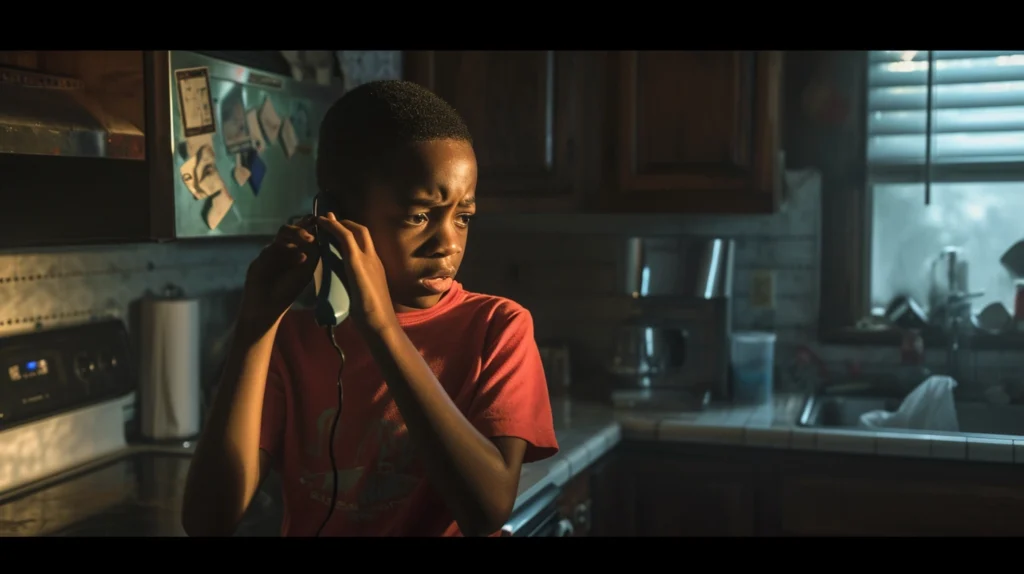
11-year-old’s call for help ends in a tragic police shooting.
By Darius Spearman (africanelements)
Support African Elements at patreon.com/africanelements and hear recent news in a single playlist, plus get early access to ad-free video content.
Key Takeaways:
- A police officer shot 11-year-old Aderrien Murry.
- The incident happened during a response to a domestic dispute call.
- Bodycam footage revealed the harrowing details of the shooting.
- The officer involved faced no criminal charges.
Introduction to the Incident
On May 20, 2023, a heart-wrenching event unfolded in Indianola, Mississippi. A domestic dispute call turned tragic when Indianola Police Sgt. Greg Capers shot 11-year-old Aderrien Murry. This incident raises critical questions about police responses to domestic disputes. Equally important, it highlights the dire consequences of such interventions.
The Call for Help
Aderrien Murry was awoken by the sound of an argument. His mother, Nakala, facing a domestic dispute, urged him to call 911. Little did they know, this call would spiral into a nightmare. Furthermore, this incident sheds light on the unpredictable nature of police interactions in domestic situations.
“Murry told ABC’s Good Morning America that he was woken out of his sleep May 20, 2023, to the sound of his mother, Nakala, and the father of one of her kids arguing. Murray said his mother told him to call 911 to report a domestic dispute.” (The Root)
Bodycam Footage Analysis
The bodycam footage released later was eye-opening. It showed Sgt. Capers struggling to enter the Murry family’s home, followed by him shooting Aderrien as he appeared in the hallway. This footage became a crucial piece of evidence, bringing the harsh realities of police brutality into the public eye. Moreover, it sparked a nationwide discussion on the need for transparency and accountability in law enforcement.
Comparison of Bodycam Footage and Police Protocol
| Aspect | Bodycam Footage Observations | Standard Police Protocol |
|---|---|---|
| Entry to Premises | Struggled to enter, permission to kick in door | Protocol typically requires clear and calm communication |
| Handling of Individuals | Immediate use of firearm | Assess situation, use of force as a last resort |
| Communication | Shouting commands | Expected to maintain calm and clear communication |
The Fateful Moment

The shooting of Aderrien Murry was a split-second decision with lifelong consequences. As the boy emerged with his hands raised, Sgt. Capers, perhaps misjudging the situation, fired his weapon. This critical moment highlights the devastating impact of split-second decisions in policing. Furthermore, it underscores the urgent need for comprehensive training in crisis management.
“On the right side of the hallway, Murray is seen running out with his hands up. In the milliseconds after he comes into the video’s frame, Capers shoots him in the chest.” (The Root)
Injuries and Medical Attention
Aderrien’s injuries were severe and life-threatening. He sustained a collapsed lung, fractured ribs, and a lacerated liver. These injuries not only highlight the physical toll of such incidents but also the emotional and psychological scars they leave. Moreover, they call into question the use of force in policing, especially involving minors.
Legal Proceedings and Lack of Indictment
In the aftermath, legal scrutiny intensified. Despite the severity of the incident, a grand jury found no criminal
conduct on Sgt. Capers’ part. This decision sparked widespread debate over legal accountability in cases of police shootings. Additionally, it raised concerns about the judicial system’s handling of such sensitive matters.
Public Outcry and the Demand for Justice
The incident led to a strong public outcry. Communities across the nation demanded justice and accountability. This reaction reflects a growing awareness and rejection of police brutality. It also signifies a call for a reevaluation of police practices and their impact on civil rights and racial justice.
Public Reaction to the Incident
| Aspect | Description |
|---|---|
| Community Response | Outcry for justice and police accountability |
| National Impact | Increased discussions on police brutality and racial justice |
| Legal Implications | Questions raised about the effectiveness of legal proceedings in police shooting cases |
The Federal Lawsuit
In response to the shooting, Nakala Murry filed a $5 million federal lawsuit for excessive force. This lawsuit symbolizes a fight against systemic issues in law enforcement. Moreover, it highlights the role of legal action in seeking justice and reform.
“Nakala filed a $5 million excessive force lawsuit alleging the Indianola police department failed to properly train Sgt. Capers.” (The Root)
Examining Police Training and Protocols
The shooting raises serious questions about police training and protocols. How well are officers prepared for high-tension situations, especially involving children? This question looms large in the wake of the incident. In addition, the need for reform in police training becomes glaringly apparent, aiming to prevent future tragedies.
Conclusion: Seeking Change and Accountability
In conclusion, the shooting of Aderrien Murry is a poignant reminder of the work still needed in law enforcement reform. It’s not just about one incident but a broader pattern of police brutality and inadequate training. Finally, this case serves as a catalyst for change, urging a move towards greater accountability and justice in policing.
FAQ
Q: What happened to Aderrien Murry?
A: Aderrien Murry, an 11-year-old boy, was shot by a police officer responding to a domestic dispute call.
Q: What were the legal outcomes of the shooting?
A: The officer involved was not indicted by a grand jury, sparking public outcry and a $5 million federal lawsuit for excessive force.
Q: What does this incident reveal about police training?
A: The incident highlights significant gaps in police training, especially in handling situations involving minors and high-tension scenarios.
Works Cited
- “Heart-Wrenching Bodycam Footage Shows Police Officer Shooting 11-Year-Old Boy.” The Root. Link.
- “Bodycam footage shows police officer shooting 11-year-old in Mississippi.” Sky News. Link.
- “Police release video of officer shooting boy, 11, who had called 911 for help.” WDIY. Link.
About the author: Darius Spearman is a professor of Black Studies at San Diego City College, where he has been pursuing his love of teaching since 2007. He is the author of several books, including Between The Color Lines: A History of African Americans on the California Frontier Through 1890. You can visit Darius online at africanelements.org
